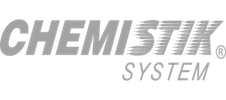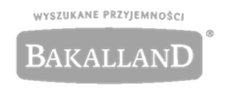Print Cycero
Technical Information
We provide our customers with proper, administered by system pursuance of all business processes influencing the quality of the provided services pursuant to Quality Management System under ISO 9001:2015 standard. We constantly develop ourselves so as to meet the constantly changing market and technical conditions as well as to adjust to the changing requirements of the Customer
Technological possibilities
Conventional printing
We print up to B1 size on the solid papers and cardboards of any density. Printing is pursued by the application of Heidelberg multicolour printing machines.
Due to the applied technology of LED UV printing to the enlarged B2 (530×740) size, it is possible to print on the non-absorbent surfaces, such as metallised surfaces as well as plastics.
Hot-stamping (gilding)
This process is performed by special metallic foil of any colour and the convex matrices heated up to the high temperature. Hot-stamping in our Print Cycero printing house is pursued on Gietz and Starfoil machines. The maximum size is 780 mm.
Lamination
Up to B1 size on semi-automatic Tunkers machine. This form of enriching is based on covering the thicker paper layer with one thin paper layer with the application of adhesive (e.g. corrugated paperboard covered by the printed GD2 cardboard with the application of adhesive. Due to this process we are able to achieve the quality of offset print on the packaging of high resistance of corrugated paperboard.
Gluing
We glue the paper sizes up to 100 cm width. Our automated Bobst folding-gluing line allow to pursue the process of gluing the packaging in a very efficient manner using from 1 to 6 adhesive points.
Varnishing by dispersive varnish
In Print Cycero printing house we varnish up to the B1 size. This method of varnishing is to, in particular, protect the print from external factors. It occurs in shiny and matt option. Its application may result in delicate gloss or tarnish depending on the chosen foil.
Varnishing by UV varnish
Up to B1 size. This type of varnishing increases aesthetic values of a packaging, label, blister, or brochure. It occurs in two versions, matt and shiny, similarly to dispersive varnish. After the application of the varnish the surface becomes clearly glossy or tarnished. There is a possibility of applying the varnish by two methods: on the whole surface or partially. Due to the partial application of varnish, it is possible to make the chosen elements of the graphic glossy or tarnished.
Varnishing by UV LED varnish
We pursue the varnishing with drip off effect. It is possible to varnish non-absorbent surfaces, such as metallised cardboards and plastics. We have technological possibilities that enable to achieve the effect of ‘orange peel’ due to the combination of drip off varnishes.
Varnishing by special varnishes
It is a process of varnishing by, for example, structural, blister, or relief (convex) varnishes. The type of the applied varnish depends on the intended use of the finished product.
Lamination
Lamination is performed up to B1 size. It relies on covering the cardboard with shiny or matt foil. This type of enriching is to increase aesthetic values as well as stiffen the surface, and protect from mechanical, and chemical damages as well as humidity. Lamination allows to avoid the risk of cracking the raw material on bends. Matt foil is very frequently used as the ground coat for the shiny UV varnish that is applied locally. Due to this it is possible to achieve the effect of underlining the matt character of the background, and burnish certain important elements of the graphic.
DTP
The asset of our Print Cycero printing house is also a richly equipped prepress room with solid and pleasant service of experienced operators. In order to guarantee the highest quality of offered, we develop our machine fleet and offer new technological solutions.
We have the professional Screen printing plate image setter (CTP) as well as Epson modern device to perform certified digital proofs .
Our graphic designers will help you to design or introduce the changes to the graphic as well as develop the structure. Before the commencement of the first production, we provide our customers with the models of target packaging in order to verify the conformity of structure or dimensions.
Technological dictionary
Terminology
Uniform-colour background
In graphic techniques this term refers to uniform background. Due to uniform-colour background it is possible to achieve white text on the dark background.
CMYK colour model
These are four basic colours used in the process of printing. The desired hue or colour is achieved by the application of primary colours in a proportionate manner.
C -cyan
M -magenta
Y -yellow
K –black
Matrix
General determination of moulds for production of copies. Currently, aluminium matrices are used the most frequently. Special CTP image setter is used to prepare them. Due to this device there are transparent exposed and unexposed places on the matrices. Exposure is responsible for the absorption of the colour by certain places, whereas unexposed places lack this property. Each printing colour refers to one matrix, e.g. full colour consists of 4, i.e. there are 4 matrices.
Pantone (Colour) Matching System (PMS)
Colour identification system is developed by Pantone Inc. from the USA. The colours are marked by a number (e.g. PMS 130) with the additional marking concerning the features, such as fluorescence, metallicity, etc. Basic scale describes 1114 colours. They occur due to mixing 15 pigments (including white and black) and owing to this fact their mapping on CMYK and RGB scales is not apparent.
Bleeds
Printing area that exceeds the product area. Bleed guarantees that the printing area will reach the edge after cutting the sheet that is being printed.
Paper hitting set
The application of typography in mass production, the tool to cut the particular shape from the sheet which typically has printed space. The plane with fixed blades is pressed to the paper with printed space and cuts the whole folded pattern by one hit, e.g. halftone of box. Cutter bars (cutting knives, die cutting knives) are frequently accompanied with creasing bars (crease), and sometimes with perforating bars (perforating knives).
Colour chart
It is used for colour identification. It is used for the precise determination of colours. The most popular colour charts are: PANTONE, HKS, and CMYK. Colour charts are used in various sectors.
File types and their preparation to print
It is a file format that is used for presentation, transfer and printing of textual and graphical content that was created and promoted by Adobe Systems. The language of pdf file description is the limited version of PostScript programming language enriched with the hypertext elements.
Open file
The term that specifies the software file saved in its native format (e.g. psd for Adobe Photoshop, indd for Adobre InDesign or cdr for CorelDRAW). As an open file it is possible to specify also ‘the batch’, i.e. the sole file with the saved graphic project along with the files of the all used fonts, used graphic, etc. It is used in order to generate the appropriate PostScript file.
Visual file
It is a compressed, in most cases prepared in display resolution, file that is used only for checking the visual compliance of the (open or closed) source file. It does not determine the target colours of the work as well as the quality of the final product. As such it is not used in the production process. It is used for the verification of the correctness of the source file.
Production file
Generated by RIP file that is separated from the halftone screen. Production files are generated from PostScript files prepared according to the particular technical specification.
Closed file
The work printed for PostScript file. In practice it is a work saved in a file to which the user should not or is prohibited to introduce any changes. The potential changes or corrections should be introduced to the open file.
Proof (also known as Cromalin or MatchPrint)
The printout compliant with the files that is performed by means of the special printing machine. The paper similar to chalk overlay paper is used for this purpose. It is performed in digital or analogue technique. It constitutes the so called colour fan. Due to it, the printer (printing machine operator) is able to adjust the target product colour fan to the proof.
Information on raw material
Sheet size
Standard paper sheet sizes used, inter alia, in sheet printing houses as well as in our Print Cycero printing house:
– A1: 610 x 860;
– A1+: 630 x 880;
– A2: 630 x 430;
– A2+: 630 x 440;
– A3: 305 x 430;
– A3+: 315 x 440;
– A4: 305 x 215;
– A4+: 315 x 220;
– B1: 700 x 1000;
– B2: 700 x 500;
– B3: 350 x 500;
– B4: 350 x 250;
– B5: 175 x 250.
Paper density
The mass of 1 m² of paper products in grams. Indirectly, this parameter is connected with the paper thickness: in most cases the paper of density amounting to 100 g/m² is 0.1 mm thick (accuracy ca. 20%). The greatest paper density is, the greatest paper stiffness occurs. The choice of density depends in most cases on the individual preferences of the customer. The choice of density, paper type, or the bottom of the cardboard depends on what we want to produce.
The exemplary application of various paper types:
Chalk overlay papers (shiny, matt):
leaflets,
brochures,
catalogues,
calendars,
business cards,
Offset paper:
books,
brochures,
catalogues,
leaflets,
forms,
leaflets for drugs.
Craft papers:
catalogues,
business cards,
brochures,
menu cards,
invitations,
folders,
diplomas,
luxury packaging,
greeting cards,
tags,
calendars,
stationery.
Self-adhesive papers:
labels,
stickers.
GC1 (cardboard with white bottom part):
postcards,
packaging for products,
blister carton boxes,
covers,
dividers,
calendars,
packaging for dry and frozen food, sweetmeats, drugs, cosmetics,
business cards.
GC2 (cardboard with cream bottom part):
packaging for food and cosmetics,
blister carton boxes,
board calendar,
dividers,
covers,
boards
GD2 (cardboard with grey bottom part):
packaging for food,
packaging for industrial products (e.g. footwear boxes, boxes for tights, etc.),
paper fancy goods (etc. calendar desk pads, pads, covers for notebooks, etc.),
household chemistry packaging (e.g. for detergents)
blister carton boxes.
Technological processes
Creasing
The processes that relies on impressing the grooves in the appropriate places on the cardboard or paper the aim of which is to facilitate the process of folding. It is applied, inter alia, so as to facilitate the bending of packaging and covers of books. This operation is performed by means of special creasing knifes.
Offset print
It is characterized by the low print unit cost and the high production launching cost. This print is profitable when there are many printouts. It is a type of flat printing in which the image is transferred for the matrix on the surface, i.e. the paper sheet.
Folding
Single or multiple folding of the paper sheet (plain or with printed space) in half or in any other proportions. There are various techniques of folding (it is possible to choose various directions) that enable to achieve the intended size and number of pages in imposition.
Lamination
Technology that relies on covering the paper by shiny or matt foil. This type of enriching, apart from increasing aesthetic values, is applied in order to stiffen the paper, and protect it from mechanical, and chemical damages as well as humidity. In case of high paper density of the cardboard (it relates to brochures, advertising bags and packaging) it allows to avoid the risk of cracking on the edges. Lamination is frequently used as the ground coat for UV varnish. Due to this it is possible to underline the matt and glossy characters of the certain elements of the graphic.
Number of the print colours
In case of offset print, every colour is connected with the new matrix for printing. The price of every print depends on the number of colours used in the graphic. When the full colour is used (e.g. when there is a colour photograph), it is said that there are 4 CMYK colours applied. If the graphic consists of one, two or three colours (from one or the other side), most frequently they are referred to additional colours – panton.
4/0 – one-sided printed space – full colour
4/1 – two-sided printed space – full colour + one colour
4/2 – two-sided printed space – full colour + two colours
4/3 – two-sided printed space – full colour + three colours
4/4 – two-sided printed space – full colour
Laminating
This form of enriching is based on covering the thicker paper layer with thin paper layer (e.g. with solid or corrugated paperboard, i.e. the so called microwave).
Wire varnishing
As the name suggests, it is the process of covering the print with varnish. It is one of the techniques of enriching the print. Various types of varnishes are used for this purpose. The choice depends on the effect we want to achieve. Dispersive and UV varnishes are the most frequently used.
Varnishing by dispersive varnish
This technique of varnishing aims to protect the print from possible smudging. It occurs in two options: shiny and matt. Depending on the chosen option, it may result in delicate gloss or tarnish.
Varnishing by UV varnish
This type of varnishing significantly increases aesthetic values of a given packaging, label, or brochure. Similarly to dispersion, it occurs in two options: matt and shiny (the most frequently used is shiny). After the application of the varnish the surface becomes clearly glossy or tarnished. The varnish can be applied on the whole surface or partially. Due to the partial application, only certain elements can become glossy.
Die cutting
It is a process of cutting the intended shape from the cardboard that is performed with the application of die cutting machine by means of paper hitting set.
Hot-stamping
In order to perform it, the special foil or convex matrices are used (the so called plates for hot-stamping). The matrices are heated to the high temperature and after there is a contact with a foil the pattern on the plate becomes impressed. In most cases golden or silver foil is used for this purpose (although other colours are not excluded). In particular, this method aims to increase the aesthetic value of the packaging and draw attention. It is an excellent manner of increasing the aesthetics of the packaging.
Dry paper embossing
The process that relies on bringing certain elements out so as to achieve the additional element of three-dimensionality.
Taken form our references

By means of this reference letter, Krakowskie Zakłady Zielarskie Herbapol w Krakowie SA [Cracow Herbal Company Herbapol in Cracow SA] desires to certify the high professionalism of the employees and the good quality of the packaging produced by Print Cycero printing house.

I can assure with the highest responsibility that PRINT CYCERO PRINTINGHOUSE Sp. z o.o. is the company that is worth recommending.
Our 12-year cooperation in the scope of carton boxes and pallets for blister heat sealing as well as packing boxes has been very productive and developmental.

Cooperation with Print Cycero Printing House Sp.z o.o. Sp.k. ul.Wojska Polskiego 6; 42-100 Kłobuck is very good.
Pursuance of orders and deliveries always on time.
Competencies of employees and the quality of the performed commissions at the high level.
